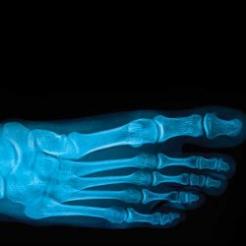Martin Farrell ponders the best way for organisations to stay connected across international borders.
Your toe bone is connected to your foot bone ... your foot bone is connected to your leg bone… your leg bone is connected to your thigh bone. And so it goes…
How easy it would be if organisations were all just connected together in one physical body, in one place. Being connected would be fairly easy. We would walk through the same door in the morning and out through the same door at night. Smile, good morning ... good night. Simple.
Over these last few months, in the International Association of Facilitators (IAF) we have been thinking about what is the best way of keeping connected and being organised within this global organisation. What structure will facilitate our future ambitions?
It takes me way back 20 years when I was part of a similar dialogue which was taking place within the British Red Cross. Then the geographical footprint was UK and now it’s the globe, but many of the issues were similar.
It also reminds me of the many conversations I have had since then with organisations who struggle to find a more effective structure, whatever their footprint.
And I see success flows from successfully addressing some recurring themes.
- How can the structure help leaders be present when they’re not in the room? Most leaders most of the time are not in the room. But to the extent to which their presence is felt they are always there.
- Does the structure help the vision live throughout the whole organisation or only in some parts of? Do you get the same message whichever bit of the stick of rock you bite off, albeit with nuances to express local difference?
- Are the ways that people meet together, both face-to-face and virtual, known and respected? Meeting together is the heart and soul of any structure.
- Is there a recognition that structures are not fixed and final but evolve and benefit from periodic reflection and review?
- Is there recognition of the need for even clearer structure and inner discipline and accountability if there is a predominantly volunteer workforce (as with IAF)?
All of this and more is facing IAF right now. Our ambitions, always substantial, have recently gone up a gear. So now there is an imperative to reflect and review, building on the best of what has been and is, as we envision and create a better future.
The board of 16 (and volunteer regional teams where they exist) are made up entirely of volunteers. We are seven regional directors, five thematic leads as well as an executive team of four, in all continents. We have one face-to-face and 11 virtual meetings a year.
We see that the same cordial, healthy and purposeful group processes which we are doing our best to live by, can solve problems, resolve conflicts large and small and also create more effective teams, communities and organisations.
We know that to fulfil our ambitions we need lots of heart and soul – and also need good strong bones, with all the right bits connected. That’s what we’re building ... toes ... foot ... leg … head … heart.









